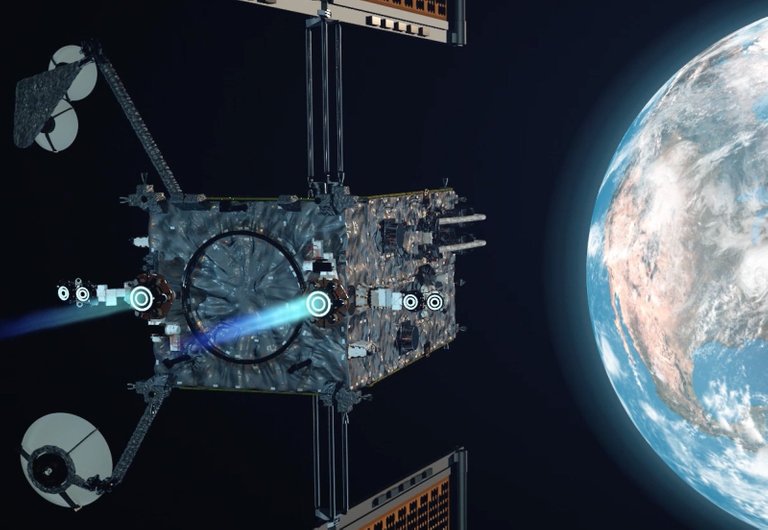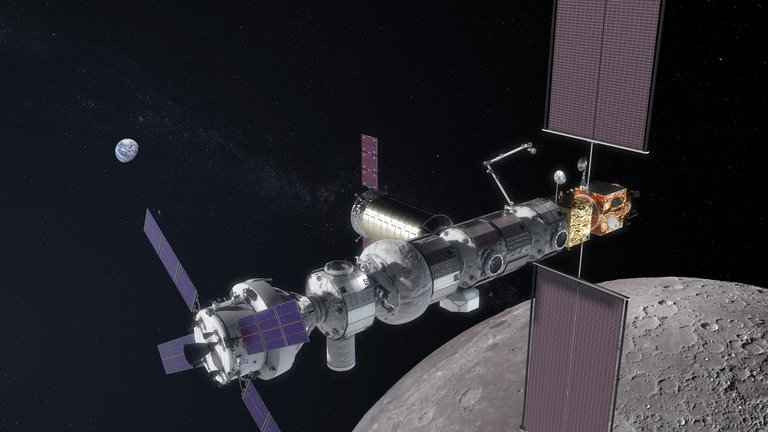
On May 23rd, NASA announced it was awarding the first contract of the new cislunar space station called Gateway to Maxar. Gateway Station will be built in a near lunar orbit for both landing people on the moon and building out the first Mars transit spacecraft. Maxar will be building the so-called Power and Propulsion Element or PPE.
The power and propulsion module is intended to keep the space station in its proper orbit and provide power to the space station via solar panels. The orbit selected for Gateway will be ideal for spacecraft going to the Moon or to escape Earth orbit to go to Mars. However, that orbit is not a stable one due to the tugging by the gravity of the Moon and Sun. So, the first element placed must be capable of adjusting the station's orbit to make sure it stays where it is supposed to be. The PPE will have a 50 kilowatt ion drive to do just that.
Additionally, the first segment must also provide electricity to the rest of the station. Since the ion drive uses a lot of electricity and very little fuel, the best solution is to bundle the two roles together. Maxar's segment will also provide the majority of the electricity of Gateway station.
The first element will be launched on a commercial rocket. Maxar has teamed with Blue Origin for the project and will probably use the New Glenn rocket Blue Origin is working on. However, Maxar has stated their design can fly on any heavy lift rocket, including SpaceX's FlaconHeavy and the United Launch Alliance's Delta IV.
Maxar won the contract for two reasons. The first was the cost. Maxar offered to build the segment for $375 million. That was significantly below the next competitor: Northrop Grumman offered to build it for $566 million. That is a significant savings for NASA. The second reason was Maxar accepted the terms and conditions of the contract NASA offered without negotiation. Every other bidder required changes to the contract. That will save a significant amount of time and by extension, money. Given the Trump administration has asked NASA to land astronauts on the Moon by 2024, that is a big deal: contracts can take months, if not over a year to negotiate when that much money is on the line.

NASA's goal is to build the space station and have it as the port where lunar and Mars bound astronauts, American and otherwise, will be transiting from. Europe, Canada and Japan are definitely participating. The Russians may not.
The Russians are in doubt due to the deteriorating relations and Russia wanting an equal say in running the space station, like they have with the International Space Station. However, NASA predominately paying for the station and no other nation will have the capability to deliver astronauts there; therefore, NASA is going to be running this as an American project with international participation rather than an international project. That alone may prevent Russia from participating.
NASA is prohibited by law from collaborating with China, so China will not be participating. This stems from China actively seeking American aerospace technology via purchase and espionage. China is becoming the superpower rival to the US and that confrontation is taking place in space as well as the surface of the Earth. China is seeking their own path to the Moon with their taikonauts. China has two recent lunar rovers, Yutu and Yutu 2. Yutu 2 is on the lunar far side. China has stated they will establish a lunar base by the end of the 2020s. Russia may team with China to go to the lunar surface.
more information:
https://spacenews.com/nasa-selects-maxar-to-build-first-gateway-element/
https://spacenews.com/price-contract-terms-helped-maxar-secure-gateway-contract/